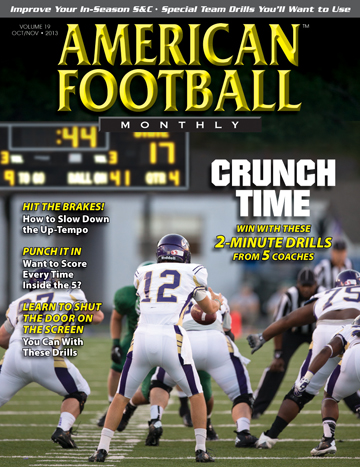Article CategoriesAFM Magazine
|
AFM Subscribers Ask with Joe Daniel Defensive Coordinator and Offensive Line Coach, Prince George High School (VA) – Part I© More from this issueJoe Daniel has more than ten years experience coaching on the high school and college level. In 2009, Daniel began building a website which includes more than 300 articles on defensive coaching – www.Football-Defense.com Daniel is also the host of The Football Coaching Podcast and has written several eBooks, including Coaching Football’s 4-2-5 Defense, Installing the 4-3 Over Defensive Front, and Dominating Football Defense with the Zone Blitz. A frequent contributor to both AFM and Gridiron Strategies, Daniel currently has a blog on AmericanFootballMonthly.com, “Linebacker Keys in the Miami 4-3 Defense.” He answers your questions. What is your defensive installation schedule in the pre-season? What are some typical defensive practice plans (individual, group, and team) you use in the pre-season to get yo....The full article can only be seen by subscribers.
|
|
|||||||
| HOME |
MAGAZINE |
SUBSCRIBE | ONLINE COLUMNISTS | COACHING VIDEOS |
Copyright 2025, AmericanFootballMonthly.com
All Rights Reserved





